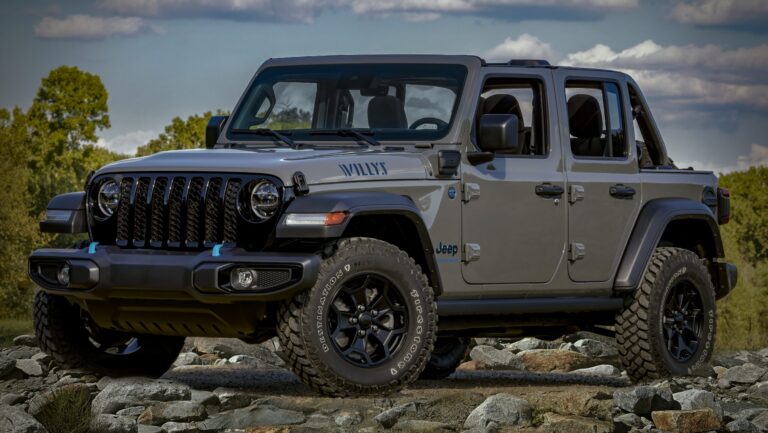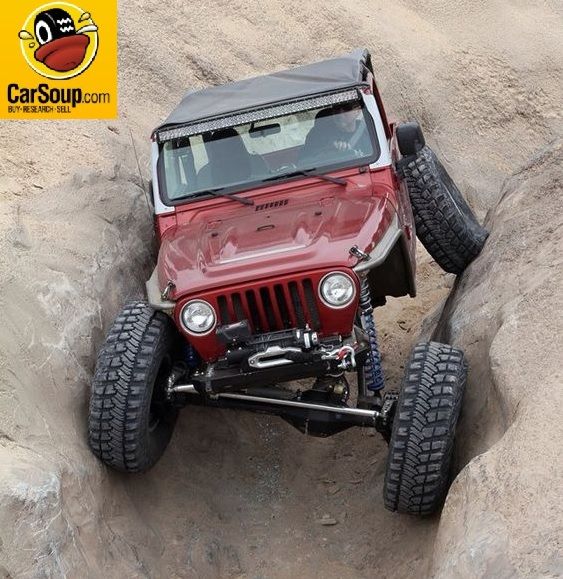Jeep Rubicon Front Axle For Sale: Your Ultimate Guide to an Off-Road Powerhouse Upgrade
Jeep Rubicon Front Axle For Sale: Your Ultimate Guide to an Off-Road Powerhouse Upgrade jeeps.truckstrend.com
The allure of the Jeep Rubicon is undeniable, particularly for those who push the boundaries of off-road exploration. At the heart of its legendary capability lies its robust drivetrain, and no component embodies this strength more than the factory-equipped Dana 44 front axle. For Jeep enthusiasts looking to significantly upgrade their vehicle’s durability, performance, and trail prowess, sourcing a Jeep Rubicon front axle for sale often becomes a top priority. This comprehensive guide will delve into everything you need to know about acquiring this coveted piece of engineering, transforming your Jeep into a true off-road beast.
The Unmatched Appeal: Why a Rubicon Front Axle?
Jeep Rubicon Front Axle For Sale: Your Ultimate Guide to an Off-Road Powerhouse Upgrade
The front axle is a critical component for any 4×4, bearing the brunt of steering, braking, and transferring power to the front wheels. While standard Jeeps (like the Sport or Sahara trims) typically come with a Dana 30 or a less robust Dana 44 front axle, the Rubicon stands apart. Its factory-installed Dana 44 front axle is specifically engineered for severe off-road conditions, offering superior strength and critical features that make it a highly sought-after upgrade.
For owners of non-Rubicon Jeeps (especially JK, JL, and JT Gladiator models), or those who have damaged their existing axle, investing in a Rubicon front axle means:
- Enhanced Strength: The Rubicon Dana 44 boasts thicker axle tubes, larger axle shafts, and more robust U-joints compared to its non-Rubicon counterparts, significantly reducing the risk of bending or breaking on challenging trails.
- Integrated Electronic Locker (Tru-Lok): This is perhaps the most compelling feature. The Rubicon axle comes equipped with an electronically actuated differential locker, allowing the driver to instantly lock both front wheels together. This provides maximum traction in low-traction scenarios, enabling the Jeep to crawl over obstacles that would leave open or limited-slip differentials spinning helplessly.
- Optimal Gearing: Rubicon axles typically come with lower (numerically higher) gear ratios from the factory (e.g., 4.10, 4.56, or 4.88 depending on the year and specific configuration). These lower gears are ideal for crawling, running larger tires, and maintaining power delivery when tackling steep inclines or rock gardens.
- Increased Durability for Larger Tires: If you plan on running tires larger than 35 inches, the factory non-Rubicon axles will likely become a weak link. The Rubicon Dana 44 is a much more suitable foundation for such upgrades, although extreme builds might still necessitate aftermarket Dana 60s or custom heavy-duty Dana 44s.

Essentially, acquiring a Rubicon front axle is a direct path to unlocking a new level of off-road capability for your Jeep, offering a blend of factory reliability and purpose-built performance.
Key Features and Specifications of the Rubicon Dana 44 Front Axle
Understanding the specifics of the Rubicon Dana 44 is crucial for making an informed purchase. While referred to broadly as "Dana 44," there are subtle but important distinctions based on the Jeep generation.
Common Characteristics Across Generations (JK, JL, JT):
- Axle Type: Dana 44 (front application).
- Differential: Electronic Tru-Lok Locker (selectable).
- Axle Shafts: Larger diameter compared to non-Rubicon Dana 44s or Dana 30s, typically 30-spline at the differential.
- U-Joints: Larger, stronger 1350 series (or equivalent) U-joints for increased torque capacity.
- Axle Tubes: Thicker wall tubing for enhanced rigidity and resistance to bending.
- Casting: Robust ductile iron housing designed for heavy-duty use.

![]()
Generation-Specific Considerations:
- Jeep Wrangler JK Rubicon (2007-2018):
- Generally came with 4.10 gear ratios, though some early models might have had 3.73.
- 5×5" (5x127mm) wheel bolt pattern.
- Utilizes a specific steering and suspension geometry.
- Jeep Wrangler JL Rubicon (2018-Present) & Jeep Gladiator JT Rubicon (2020-Present):
- Often feature 4.10 or 4.56/4.88 gear ratios, particularly with the 3.6L and 2.0L engines, and lower for the 392/EcoDiesel.
- Still 5×5" (5x127mm) wheel bolt pattern.
- Significantly different steering, suspension, and electronic architecture (e.g., electronic disconnect sway bar integration, ABS/traction control sensors).
- The JL/JT Dana 44 is often referred to as the "Next-Gen Dana 44" or "Dana M210," featuring a larger ring gear and pinion than the JK Dana 44, making it even stronger.
Compatibility is Paramount: A JK Rubicon axle is not a direct bolt-in for a JL/JT, and vice-versa, due to differences in mounting points, steering components, and electronics. Always verify the year and model compatibility before purchasing.
Where to Find a Jeep Rubicon Front Axle For Sale
Finding a Rubicon front axle requires a strategic approach, as new ones directly from Mopar can be prohibitively expensive. The most common and cost-effective avenues are through the used and aftermarket markets.
1. Used/Salvage Market: This is where most enthusiasts find their Rubicon axles.
- Online Marketplaces:
- eBay: A vast inventory, but requires careful vetting of sellers and detailed inspection of photos. Shipping can be arranged through freight.
- Craigslist/Facebook Marketplace: Excellent for local finds, allowing for in-person inspection and avoiding shipping costs. Search terms like "Jeep JK Rubicon front axle," "JL Dana 44 front," or "Gladiator Rubicon axle."
- Dedicated Jeep Forums & Facebook Groups: Many regional and national Jeep communities have "For Sale" sections. These often have knowledgeable sellers and buyers, making transactions more transparent. Examples include "JK-Forum," "JL Wrangler Forums," and various Facebook groups for specific Jeep models or regions.
- Auto Salvage Yards / Recyclers: Wrecked Rubicons are a prime source. Call local and regional salvage yards to inquire about inventory. Be prepared to travel or arrange shipping.
- Specialized Jeep Parts Dealers: Many businesses specialize in dismantling Jeeps and selling used parts. These often offer a bit more vetting and potentially a limited warranty compared to a private seller.
- Off-Road Shops: Some shops that perform axle swaps or upgrades may have take-off axles for sale. It’s worth inquiring with shops in your area.
2. New/Aftermarket: While not strictly "Rubicon" axles, these are heavy-duty Dana 44 or Dana 60 replacements that offer similar or superior strength and features.
- Crate Axles: Companies like Dynatrac, Currie Enterprises, TeraFlex, and G2 Axle & Gear offer complete, heavy-duty aftermarket front axles. These are typically much stronger than the factory Rubicon Dana 44 and come with options for lockers, gearing, and even 5×5.5 or 8-lug bolt patterns. They are, however, significantly more expensive than a used Rubicon axle.
- Mopar: You can order a brand-new factory Rubicon axle from a Mopar dealer, but be prepared for a substantial price tag, often rivaling or exceeding the cost of some aftermarket heavy-duty axles.
Factors to Consider Before Buying
Purchasing a used axle is a significant investment and requires due diligence.
-
Condition Assessment:
- Housing: Look for bent axle tubes (common on abused axles), cracks in the casting, and excessive rust. A straightedge across the axle tubes can reveal bending.
- Knuckles/C’s: Check for cracks or bends, especially if the Jeep had been in an impact.
- Ball Joints: While replaceable, worn ball joints indicate neglect or heavy use. Factor replacement costs into your budget.
- Unit Bearings/Wheel Hubs: Spin the hubs to check for roughness or play. Like ball joints, they are wear items.
- Locker Functionality: If possible, test the electronic locker. Listen for engagement and disengagement. Ask the seller if it was working prior to removal.
- Gears: Ask about the gear ratio. If possible, visually inspect the gears for pitting, chipped teeth, or excessive wear. This usually requires removing the differential cover.
- Axle Shafts: Check for straightness and spline integrity.
- Brake Components: Rotors and calipers are often included but may need replacement.
-
Gearing: Ensure the front axle’s gear ratio matches your existing rear axle’s ratio. If they don’t match, you will experience severe drivetrain binding in 4WD. If you plan to re-gear, factor in the cost of re-gearing both front and rear.
-
Year/Model Compatibility: As discussed, JK, JL, and JT axles are not interchangeable without significant modification. Double-check the year of the donor vehicle.
-
Completeness:
- Bare Housing: Cheaper, but requires you to source axle shafts, differential, brakes, steering components, etc.
- Complete Axle (Hub-to-Hub): Most desirable, as it includes everything: differential, axle shafts, knuckles, unit bearings, ball joints, and often brake calipers/rotors and steering linkage. This is generally a "bolt-in" solution (after ensuring compatibility).
-
Price vs. Value: Compare prices from multiple sellers. A seemingly cheap axle might have hidden damage or require extensive repairs, ultimately costing more than a slightly more expensive, well-maintained unit.
-
Shipping & Logistics: Axles are heavy and bulky. Factor in freight shipping costs if buying from a distance. Get a quote before committing. Local pickup is always preferred.
The Purchase Process: A Step-by-Step Guide
- Define Your Needs & Budget: Determine if you need a JK, JL, or JT axle, what gear ratio, and your maximum budget for the axle itself and potential associated costs (shipping, installation, repairs).
- Research & Locate: Use the resources mentioned above (online marketplaces, forums, salvage yards) to find suitable candidates.
- Communicate & Inquire:
- Ask for detailed photos from multiple angles, especially of critical areas like the pumpkin, axle tubes, and knuckles.
- Inquire about the donor vehicle’s mileage, accident history, and why the axle was removed.
- Ask if the locker was tested and functional.
- Confirm the gear ratio and if the differential fluid was drained.
- Inspect (In Person or Virtually):
- In-Person: Ideal. Bring a flashlight, a magnet (to check for cracks in cast iron), and potentially a straightedge. Check for play in ball joints and unit bearings.
- Virtual: If not possible in person, request a video walkthrough of the axle, focusing on the critical areas. Ask the seller to wiggle components to demonstrate play.
- Negotiate: Don’t be afraid to negotiate, especially if you find minor issues.
- Arrange Payment & Shipping/Pickup: Use secure payment methods. If shipping, ensure proper crating and insurance.
- Post-Purchase Inspection & Service: Once you receive the axle, thoroughly inspect it again. It’s highly recommended to change the differential fluid, inspect or replace ball joints, and possibly unit bearings before installation, even if they appear fine. This is much easier to do off the vehicle.
Potential Challenges and Solutions
- Finding the "Right" Axle: Patience is key. Expand your search radius and be prepared to wait for the ideal unit to appear.
- Hidden Damage: Mitigate this by thorough inspection (as detailed above) and asking probing questions. A reputable seller will be transparent. If buying from a distance, consider asking for a video call inspection.
- High Shipping Costs: Get multiple freight quotes. Consider buying locally to avoid shipping entirely.
- Compatibility Issues: Double-check part numbers, consult online forums, or speak with an experienced Jeep mechanic before finalizing the purchase.
- Installation Difficulty: If you’re not comfortable with advanced automotive work, budget for professional installation. An axle swap involves heavy lifting, precise alignment, and proper torqueing of bolts.
Estimated Pricing Guide for Jeep Rubicon Front Axles
Prices for Rubicon front axles vary significantly based on condition, completeness, and demand. This table provides a general range:
| Axle Type / Condition | Estimated Price Range (USD) | Notes |
|---|---|---|
| New Mopar JK/JL/JT Rubicon Front Axle | $4,000 – $8,000+ | Direct from dealership, often only housing or complete; very expensive. |
| Aftermarket Crate Dana 44 (e.g., Dynatrac, Currie) | $5,000 – $10,000+ | Brand new, stronger than factory Rubicon, fully customized with lockers/gears; ultimate upgrade. |
| Used JK Rubicon Front Axle (Complete) | $1,500 – $3,000 | Includes differential, shafts, knuckles, brakes; good condition, low mileage. |
| Used JK Rubicon Front Axle (Housing Only) | $800 – $1,500 | Bare housing, requires sourcing all internals; cheaper upfront but more work. |
| Used JL/JT Rubicon Front Axle (Complete) | $2,500 – $4,500+ | Newer generation, stronger Dana M210, higher demand; often includes electronics for locker/sway bar. |
| Used JL/JT Rubicon Front Axle (Housing Only) | $1,200 – $2,000 | Bare housing for JL/JT. |
| Damaged/Needs Rebuild | $500 – $1,500 | Priced lower, but significant investment required for repairs (e.g., bent tube, bad gears, non-functional locker). |
Disclaimer: These are approximate ranges and can fluctuate based on market demand, location, seller, and specific features (e.g., specific gear ratio, mileage).
Frequently Asked Questions (FAQ)
Q1: What’s the biggest difference between a Rubicon front axle and a non-Rubicon front axle (e.g., Dana 30 or Sport Dana 44)?
A1: The primary differences are strength (thicker tubes, stronger shafts, larger U-joints) and the integrated electronic Tru-Lok differential locker found only on the Rubicon axle. Non-Rubicon axles typically have open differentials or limited-slip options, and are not designed for the same level of abuse.
Q2: Can I put a JK Rubicon axle into a TJ or YJ?
A2: While technically possible with significant fabrication, a JK Rubicon axle is not a direct bolt-in for older TJ/YJ models. The mounting points, width, and steering geometry are different. It’s a major custom project, not a simple swap.
Q3: Do I need to re-gear my rear axle if I swap the front?
A3: Absolutely. Your front and rear axle gear ratios must match exactly to avoid severe drivetrain binding and damage when operating in 4WD. If the Rubicon front axle has a different ratio than your current rear, you’ll need to re-gear both axles to match.
Q4: Are aftermarket Dana 44s better than factory Rubicon Dana 44s?
A4: Generally, yes. Aftermarket heavy-duty Dana 44s (from companies like Dynatrac, Currie) are typically built with even stronger components (larger tubes, heavier-duty castings, bigger shafts, better metallurgy) than the factory Rubicon Dana 44, making them suitable for extreme off-roading and very large tires (40+ inches). They also come with a significant price premium.
Q5: How much does professional installation typically cost?
A5: Installation costs vary by region and shop, but generally range from $500 to $1,500 for a straight bolt-in swap. This does not include the cost of re-gearing or repairing the axle itself.
Q6: What should I look for when inspecting a used axle for sale?
A6: Key areas to inspect are bent axle tubes, cracks in the housing or knuckles, excessive rust, play in ball joints or unit bearings, and signs of leakage from the differential. If possible, visually inspect the gear teeth for wear or damage by removing the differential cover.
Conclusion
The Jeep Rubicon front axle represents a significant and highly effective upgrade for any serious off-roader. Its inherent strength, robust gearing, and invaluable electronic locker transform a capable Jeep into an unstoppable one. While the search for a "Jeep Rubicon front axle for sale" requires diligence, patience, and a keen eye for detail, the reward is a vehicle capable of tackling far more aggressive terrain with confidence.
By understanding the features, knowing where to look, and meticulously evaluating potential purchases, you can secure this vital component and elevate your Jeep’s off-road performance to the legendary Rubicon standard. Invest wisely, install correctly, and prepare to conquer trails you once only dreamed of.




